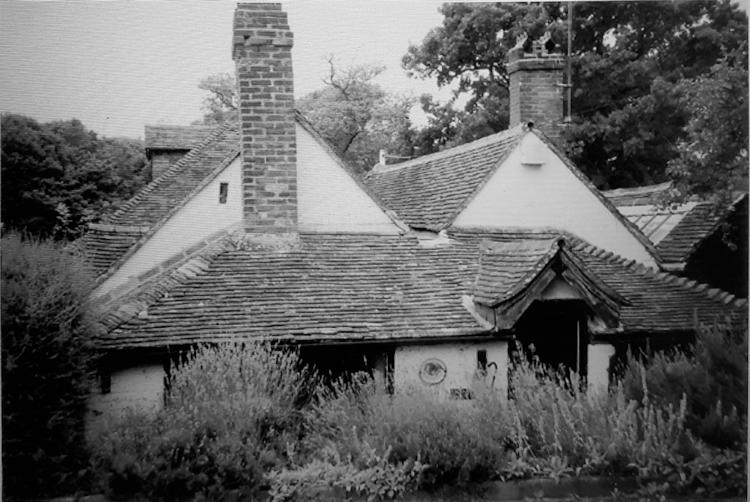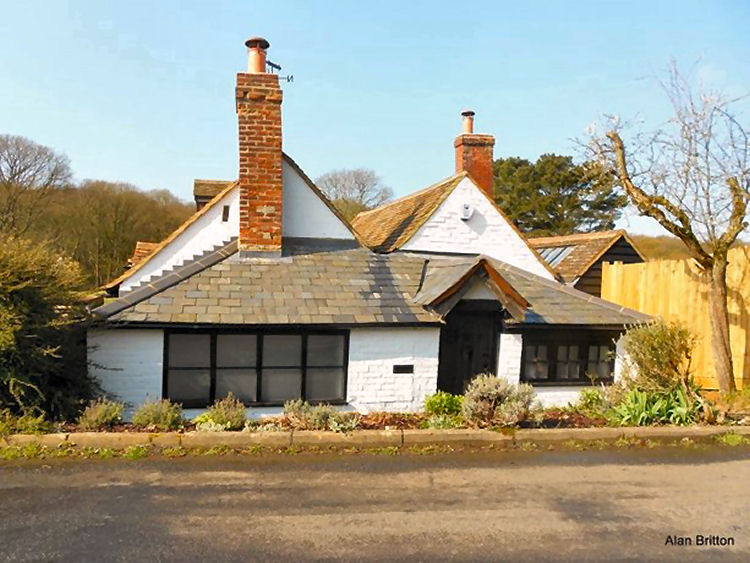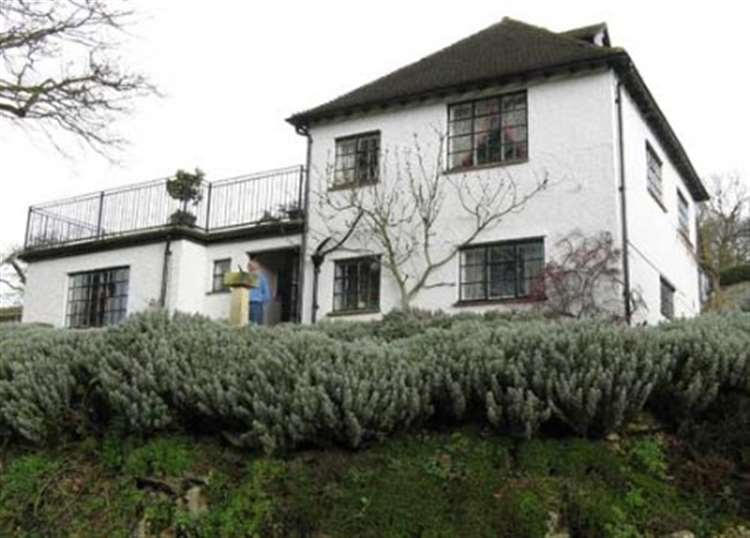Page Updated:- Wednesday, 13 September, 2023. |
||||||||
| PUB LIST | PUBLIC HOUSES | Paul Skelton | ||||||
|
Earliest 1800 |
Bourne Tap |
Latest 1826 |
||||||
|
Bourne Road Aldington
Said to be quite a notorious beer house frequented by the Ransley gang during their smuggling times. Owned and run as an unlicensed beer house by George Ransley the notorious smuggler.
From the http://www.smuggling.co.uk THE ALDINGTON GANG. The story of smuggling in east Kent in the 1820s is largely dominated by the activities of a gang based in Aldington, who worked the stretch of coast between Deal and Rye. They were nicknamed 'the Blues' — supposedly because they wore blue smocks to work — though the customs authorities simply named them after the parish in which some members lived. However, it would be wrong to suggest that every member of the Blues was from Aldington. The gang could with ease turn out hundreds of workers to unload a cargo, and to supply this amount of labour would probably have meant enlisting the help of half the parish. Rather the nucleus of the group came from Aldington, and they picked up help from a much broader area of the county. Early reports of the gang's activities find them rowing from Boulogne to Sandgate, with a cargo of tobacco, spirits and salt. On arrival, the waiting land party of 250 or so formed the customary corridor of armed men running about forty yards inland from the galley; protected by this cordon, the contraband was moved quickly and relatively safely away. This operation was noted in detail by the preventive forces who sustained several casualties, so it's fair to assume that the group had been operating on a smaller scale, or undetected, for some time prior to the 1820 report. This run took place in late autumn, and the company didn't come to the attention of the authorities again until the following February. When they did, it was in a dramatic and especially violent way. A blockade patrol spotted the gang at Camber Sands, and within a short time a running battle had started, as the smugglers retreated across Walland Marsh towards Brookland, firing repeatedly at the blockademen. The confrontation was bloody and bitter, leaving four smugglers and one blockademan dead, and many injured. Two of the Blues were caught in the 'Battle of Brookland', as it came to be known. According to some accounts the smugglers' leader, Cephas Quested, was found after the battle lying dead drunk on his back in the marsh. When his case came to court, one piece of evidence against him was particularly damning, and probably sealed his fate on the gallows: in the thick of the battle, he mistook a blockademan for a smuggler, and handed him a pistol, suggesting that the man should 'blow an officer's brains out'. The other man arrested claimed to have been an innocent bystander, and attributed the gunpowder stains on his skin to a rook-shooting trip. The gullible (or terrified) jury believed this alibi and acquitted him. The trial was a setback for the gang, and further reports of their activities don't appear for another five years. By this time, George Ransley had assumed the mantle of leadership. The Ransley family hailed from Ruckinge, and were originally farmers, though George Ransley apparently gave up the plough for smuggling when he accidentally stumbled on a hidden cargo of spirits. The proceeds from the sale paid for his house at Aldington, the Bourne Tap, and capitalized his ventures into smuggling. Other legends that surround the family and the activities of the gang contain the usual mixture of truth, exaggeration and simple fiction, but what doesn't seem to have been exaggerated is the violent nature of the gang's activities, and the viciousness of some of the batsmen that protected the cargo. George Ransley's second-in-command was his father-in-law, who was reputedly always armed with a threshing flail — a vicious instrument when used to crush skulls instead of corn husks. Circumstantial evidence suggests that the Blues forced cooperation from the more unwilling of the local farmers. Ransley organized his business methodically and professionally. He retained a surgeon, Dr Ralph Papworth Hougham, to attend to wounded smugglers; his solicitors in Ashford, Langham and Platt, defended him in court just as they would the most respectable banker; and because Ransley took care of the families of those unfortunate to die on active duty, he seemed able to command considerable commitment from those he led. At Aldington, the gang used the "Walnut Tree" as their headquarters, but George Ransley also made a considerable profit by selling smuggled liquor from the "Bourne Tap." The house was notorious not only for drunkenness, but also for the scenes of unbridled sexual license that took place on the premises. Local legend has it that George Ransley did not himself take part, but sat sober outside the house during these orgies. Ransley's long and distinguished career in the service of free-trade finally ended here at his home one stormy night in 1826. The gang had been running wild locally, terrorizing the neighbourhood, and generally making themselves unpopular. The killing of Richard Morgan on Dover beach had lost them considerable support, and the preventive authorities finally grasped the nettle and took on the gang. A party of blockade men aided by a couple of Bow Street runners encircled the house, cutting the throats of the guard-dogs. George Ransley was in bed when the doors were smashed down, and was taken to Newgate prison to await trial, the local gaols being considered too insecure for such a big fish in the smuggling world. Seven more of Ransley's gang were taken in a simultaneous swoop, and another 11 were arrested soon afterwards. At their trial a form of plea-bargaining seems to have secured the lives of the gang; though all were sentenced to death, the punishment was reduced to transportation. George Ransley thrived in Australia, and though some tales suggest that he sneaked back as an old man to die in England, his great-great-great grand-daughter, Gaye Farmer, has evidence that this is not the case. She writes that "...he died in Tasmania and we have burial records showing the church cemetery where he and his wife Elizabeth are buried, George was buried on 29th October 1856 and Elizabeth on 1st. January 1859."
LICENSEE LIST RANSLEY George till 1826
|
||||||||
|
If anyone should have any further information, or indeed any pictures or photographs of the above licensed premises, please email:-
|
||||||||
| TOP |
|
|
||||||


